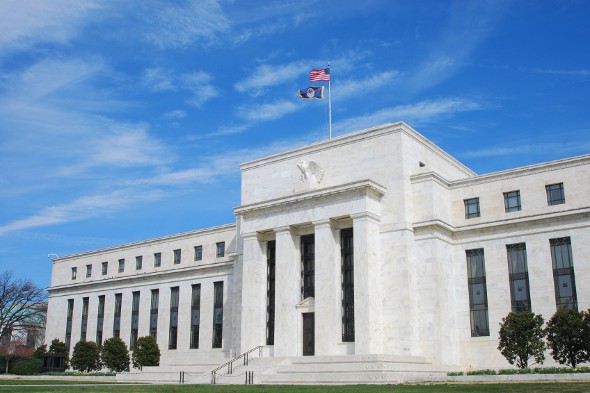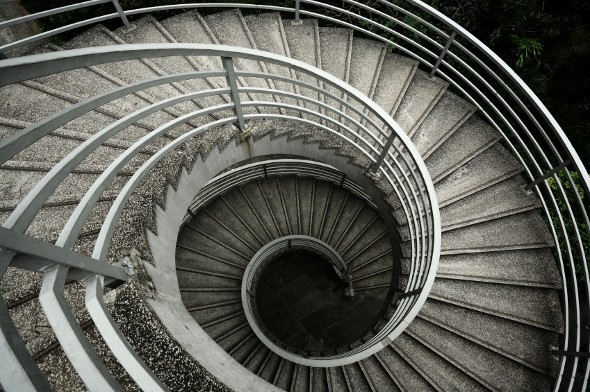Everyone loves the feeling of relief when gas prices and grocery bills go down — after all, who wouldn’t enjoy a little extra cash in their pocket? That extra breathing room can make a big difference, whether you’re tackling debt, boosting your savings or contributing to your retirement fund. However, a broad decline in prices could indicate a less celebratory economic trend: deflation. While lower prices may seem like a win at first glance, deflation can signal deeper issues within the economy that may impact your financial plans.
Navigating the complexities of economic shifts like deflation can be challenging, but you don’t have to do it alone. Partnering with a financial advisor can help you develop strategies to protect your wealth and stay on track toward your financial goals, no matter the state of the economy.
Deflation Defined
You’re probably fairly familiar with how inflation works. There’s inflation whenever prices of goods and services are consistently rising. And as a result, consumers have less purchasing power, because their money isn’t worth as much as it once was.
Deflation is the opposite of inflation. To say that there’s deflation is to say that costs are falling across the board. It’s not the same as disinflation, which happens when inflation slows down but prices don’t drop.
There are multiple causes of deflation. Deflation can occur when the demand for goods and services decreases or when the money supply shrinks. There might be deflation when investors stop putting their money into the market or the government cuts back on spending.
Initially, deflation can be followed by an uptick in spending and trading. That can be positive. But if deflation continues, deflating prices can mean that trouble lies ahead.
Inflation vs. Deflation
As noted above, inflation and deflation are opposites. Inflation is when the prices of goods and services rise, rendering a single dollar less valuable. Deflation is the opposite, when the prices of goods and services goes down, rendering a single dollar more valuable.
While inflation is often seen as a major struggle for a countries economy, deflation is actually considered a bigger threat by many economists. While inflation can certainly create hardships, especially if wages don’t rise in step with the costs of goods and services, deflation can actually cause recessions and depressions.
Why Is Deflation So Bad?

The reasons deflation is problematic might not be obvious. After all, why would anyone complain about falling prices? But it’s important to keep in mind that a general decline in prices over time can seriously weaken the economy.
Ultimately, deflation can lead to bankruptcies, rising unemployment rates and declines in wages, business profits and investment earnings. With more unemployment and less discretionary income, folks struggle to stay afloat and pay their bills on time. Debt becomes an even bigger burden for borrowers and shoppers may hold off on buying what they want, assuming that prices will fall again at some point in the future.
Trying to dig a country out of a deflationary hole can be quite difficult. Low prices leading to low demand, low wages and low profits can seem like a cycle that’s never going to end. You shouldn’t be surprised to learn that periods of deflation are often accompanied by recessions and depressions like the Great Depression of the 1930s.
Japan’s Deflation Problem
A classic example of the negative effects of deflation is the crisis that Japan went through in the 1990s and 2000s. It stemmed from the bursting of the 1980s asset bubble, resulting in a drop in equity prices, real estate and growth in terms of GDP. Banks lost money, and the bad loans they had financed only made matters worse.
Prices fell in most sectors. The country’s central banking system brought interest rates down to zero and then kept them near zero, hoping to get the economy moving again. Japan bounced back slowly and by 2006 it was showing signs of real recovery. However, Japan is still dealing with deflation.
How the Government Monitors Deflation
The consumer price index (CPI) provides a way to track inflation in the United States. It watches the price movements of everything from transportation and food to education. We can tell that there’s deflation whenever prices in the index have decreased across the board for a sustained period.
Unfortunately, the CPI isn’t perfect. It doesn’t account for all goods and services. Certain elements that play a role in deflation – such as stock and bond prices – are left out of the index. Consequently, the government can sometimes miss signs of impending asset deflation.
Our Federal Reserve prevents deflation by increasing the money supply and pumping more money into the economy. It reduces interest rates and buys government-backed securities. These moves can encourage spending and speed things back up.
A government can also spend more or cut taxes if a country has already dipped into a deflationary spiral. However, doing so could reduce government revenue that’s needed during tough economic times.
If a government does not monitor inflation correctly, the economy could encounter stagflation, which describes when deflation occurs during persistent unemployment and stagnant demand in the economy,
Bottom Line

Like inflation, deflation that’s left unchecked can cripple an economy. Price decreases hurt businesses and investors as profits slow and companies are forced to shut down. Workers and consumers eventually feel the weight of deflation as they lose jobs, earn less and spend less, expecting poor economic conditions to continue. As an individual, you can’t do much to avoid deflation. What you can do, though, is work on saving, build up an emergency fund and pay down debts in case deflation becomes a reality.
Personal Finance Tips
- Want to prepare for possible periods of deflation? Finding a financial advisor doesn’t have to be hard. SmartAsset’s free tool matches you with vetted financial advisors who serve your area, and you can have a free introductory call with your advisor matches to decide which one you feel is right for you. If you’re ready to find an advisor who can help you achieve your financial goals, get started now.
- A budget can help you save money in case a broader economic trend, like deflation, impacts the economy. Get budget-setting tips using SmartAsset’s free budget calculator tool.
Photo credit: ©iStock.com/leungchopan, ©iStock.com/GlobalStock, ©iStock.com/uschools
